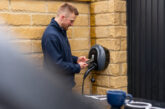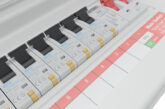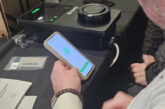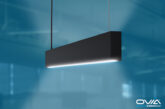
As the demand for EV charge points continues to increase, Mark Hodgson, Director at Test Instrument Solutions, emphasises the importance of full testing of EVSE and runs through the tests that should be performed and documented.
Let’s address the elephant in the room straight away. Of course TIS has a vested interest in advocating the full testing of Electric Vehicle Supply Equipment (EVSEs) – after all, it has multi award-winning test equipment within this field.
However, it is felt that for general electrical safety, Electricity at Work Regulations compliance, along with making sure the installer is covered from a liability perspective, some or all of the tests outlined in this article should be performed and documented. After all, EVSEs are being installed outside in public places subject to weather and potential misuse.
Continuity test
This test, performed downstream of the EVSE, is particularly useful on tethered lead systems to make sure that the Earth conductor in the lead is correctly connected to the EVSE.
Insulation resistance testing
Again, this is of particular use on tethered lead units where the cable could have been crushed whilst on the floor. These tests will ensure that the internal conductors within the lead have adequate insulation resistance properties.
Status checks
For peace of mind, it’s important to have the ability to simulate various fault and non-fault conditions relating to a vehicle and the EVSE it is connected to.
Test equipment is available to simulate:
1. If the vehicle is not plugged in, is any power being delivered from the socket?
2. When the vehicle is plugged in but not asking for a charge, is the cable locked?
3. Will the EVSE deliver the correct voltage and current to the vehicle as and when required?
4. Confirmation that the car and EVSE communication protocol is established.
5. With an Earth fault introduced, will the EVSE disconnect the power?
6. When an electric fault occurs with the vehicle, will the EVSE shut off the power?
Loop impedance testing
This test will allow the installer to confirm that the EVSE has good Live-Neutral and Live-Earth loop impedance readings back to the supply, along with correct associated PSC and PFC values.
Type A RCD test
It’s important to check that the Type A RCD within the circuit is going to trip in time under a fault condition.
Type B* and RDC DD** tests
At TIS, we believe that this test is one of the most vital of all.
Should there be a pure DC fault of 6 mA or above (let’s not forget that we’re talking about battery electric vehicles which, in some instances, will be linked to solar PV and battery storage systems) then the pure DC fault is likely to ‘blind’ all other RCDs in the installation, therefore potentially stopping them from disconnecting the supply during a fault condition.
For the sake of a couple of seconds, it’s important to check the 6 mA DC trips will work in-situ. If we don’t, we could be in big trouble.
* When performing a Type B test, please check that your testing equipment will test 6 mA Type B RCD.
** Most EVSEs do not incorporate a 6 mA Type B RCD, but the more cost effective 6 mA RDC DD variant. Currently there are only a small number of test instruments on the market capable of testing this type of trip correctly, due to it having a slightly different test sequence, along with pass/fail parameters.
Check out the full range of products from Test Instrument Solutions here
Find more industry feature articles here









